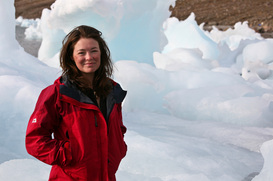 Frozen Planet Assistant Producer Elizabeth White Frozen Planet Assistant Producer Elizabeth White BBC Natural History Unit Producer Kathryn Jeffs and Assistant Producer Elizabeth White both directed orca sequences for the hit wildlife documentary series ‘Frozen Planet’. Kathryn has a BSc in Wildlife Film-Making and has worked on a number of blue chip series, including the BBC’s Life of Mammals, Planet Earth and Wild China. Kathryn directed the infamous Type B Antarctic orcas wave-washing Weddell seals from pack ice. Elizabeth has a PhD in Zoology specialising in vision and visual behaviour in fish. Previously, she has worked on a number of presenter-led shows and short films many of which have a marine focus. Elizabeth filmed the Type A Antarctic orcas hunting minke whale. ------------------------------------------------------------------------------------------------------------------- 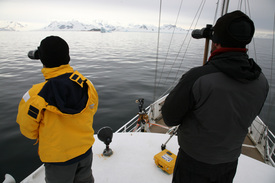 Looking for orcas (Photo: Elizabeth White) Looking for orcas (Photo: Elizabeth White) Sam: Can you expand a little on what the roles of producer, assistant producer (and director) entail? And what does your role involve when actually filming the orcas? Elizabeth: The producer is the person who takes overall responsibility for the film – determining what stories go into the script, budgeting it all out and generally project managing that particular episode. Assistant producers help with this process – usually taking on board specific sequences and taking responsibility for them, from planning through to completion. On Frozen Planet, both producers and assistant producers also took the role of director – going out in the field to direct the cameramen to make sure we were filming the sequences/stories in the way the producer wanted. Sam: You both directed some fantastic orca scenes for the Frozen Planet series. Was this the first time you had seen orcas? Kathryn: This was my first experience seeing and working with orcas so I made sure I drew a lot on the experience of the scientists and the skipper I was working with. The expedition took three months in total during the winter of 2008 and 2009. We concentrated on orcas for one month, travelling with orca researchers John Durban and Robert Pitman who were really keen to get time studying the Antarctic orcas. The first time we saw orcas was in Gerlache Strait, in the Antarctic Peninsula. It put me in a weird psychological position because I knew we couldn’t get the sequence [orca wave-washing] we wanted, so we had to move on, knowing we might not see them again. The conditions required for that behaviour need to be perfect and this first time, they weren’t. Elizabeth: I had seen orcas before, during deep ocean research cruises, but I hadn’t filmed them. Sam: Elizabeth, you filmed Type A orcas hunting minke whales. Where did the idea for this sequence come from? Elizabeth: After the success of the Type B wave wash sequence, we decided to return to Antarctica to document some of the other types of killer whale including those that hunt prey larger then them (e.g. humpback whales or minkes). Killer whales are known to take many of the big baleen whales, but this is seldom seen and very rarely filmed – Blue Planet documented killer whales preying on a young gray whale, but there are accounts of them taking adult baleen whales too and this is something we hoped to capture. Sam: So how did you go about finding the orcas? Elizabeth: You have to have a plan, you have to know where to go and you have to have the right crew with you. You then start by talking to everyone who might know something. Kathryn: To find the Type B orcas, we travelled south from Gerlache Strait to Adelaide Island. There’s a tiny channel where ice crams and blocks up. We were looking for the perfect conditions but there was a concern that one storm and the ice would be gone, so we had limited time. But we did find ice – so much that after repeated attempts we couldn’t get through and we had to turn back and go around the island. It was nerve-wracking – the skipper had to weigh up being far enough away from the ice cliffs to avoid being literally crushed by falling ice and close enough to offer protection if a storm did come in! Sam: In what capacity did you work with orca researchers John Durban and Bob Pitman, and how does having specialist scientists working with you add to the sequence and overall documentary? Elizabeth: John and Bob joined us for two trips to the Antarctic Peninsula – firstly to film the wave washing behaviour and then the minke hunt. They were a fantastic asset – helping us spot the whales and interpret their behaviour, and also using their satellite tagging system to tag the whales, allowing the same pod to be found repeatedly. The relationship was a good one – we had first hand access to scientific knowledge and interpretation and they were able to spend long periods of time around the whales in places that are hard to access. Research grants would rarely offer the opportunity to spend so long with the same pod, but as filmmakers we have to be 'with' the animals to film them. It is fantastic when scientists and filmmakers can work together and gain from the relationship. Sam: Kathryn, it was your first time experiencing orcas in the wild. How did you feel when you were asked to direct this sequence? Kathryn: Phenomenally excited. I had always wanted to get to Antarctica so it was fantastic to have the opportunity but also, I knew just how difficult the shoot might be – this was a so-called ‘holy grail’ shoot – potentially impossible to get. I didn’t know much about orcas at the time but, of course, I’ve always been fascinated by the natural world and new behaviours. Preparation and getting to learn about them before the shoot, by reading through papers and talking to anyone who’d had first hand experience, was a lot of fun. I made maps of sightings to really narrow down where I thought the action might happen. Sam: How challenging was it to film these animals? Elizabeth: The location was a challenging place to work, and it was a gamble as to whether we'd actually see the behaviour. But, as animals go, killer whales are remarkably easy to be around – they are bold and fearless and aren't nervous of people, which helps immensely when you're trying to spend time with them. 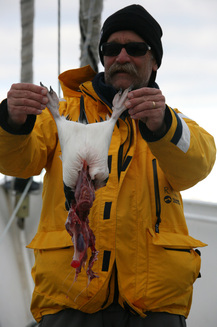 Orca scraps (Photo: Elizabeth White) Orca scraps (Photo: Elizabeth White) Sam: What was it like to see orcas hunting other marine mammals? Elizabeth: Its very difficult watching or filming any animal kill another – especially something as big and gentle as a minke whale. I had very mixed feelings: the hunt took two and a half hours and it was a total emotional roller coaster. We were following as fast as we could in the boat, trying to document what was happening and there were many times when we thought the minke whale might get away. Our job was to film a hunt, so on one hand we were wanting the killer whales to succeed, and on the other I really didn’t want to see the minke die. At the end of the day, you’re just an observer and you cannot control what happens with animals as big as this. Kathryn: I think I’m a bit of a softy. I did find it difficult, seeing the seals fighting so hard for their lives. They were terrified but never gave up. I have a lot of respect for the Weddell seals. Sam: Did you notice any similarities or differences between the Type As and Type Bs? Kathryn: The Type B’s hunted the seals completely silently. They were more interactive, more curious. We were in Zodiacs [boats] and for the first day or two they ignored us. After that they were really trying to work out who was hanging around them. They would look us right in the eye. Elizabeth: Type A orcas would cruise near the boat and check you out but during the hunt they were on a mission. These orcas are said to be really vocal after a kill but it all happened so quickly we never managed to get the hydrophones out! Sam: What are your thoughts on animals and emotions – did you experience that the orcas, seals and minke whales you were filming had emotions? Kathryn: Yes, I do think they have emotions – emotions are tools for sociality so it shouldn’t surprise us really that animals, which live in these big family groups and have a need for all the cooperation and complexity that involves, would have similar emotions to us. 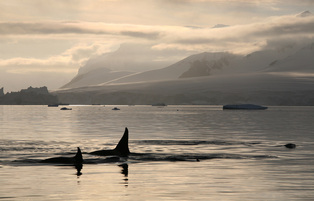 Antarctic orcas (Photo: Elizabeth White) Antarctic orcas (Photo: Elizabeth White) Sam: Why did you enjoy working on the orca sequences so much? Elizabeth: Killer whales are some of the most intelligent animals on the planet – its incredible to spend such time with them, getting to understand their behaviour and their character traits – and in such an incredible location as the Antarctic peninsula Sam: And finally, what advice would you give to aspiring film-makers who want to work in wildlife documentary? Kathryn: Don’t dismiss following your interests in natural history properly via the science route. You can pick up a hell of a lot being a naturalist and the field skills of a true passionate naturalist are invaluable on a shoot but it really helps to have training from a high academic level. And then, grab a camera and get out there – make a short film as anyone can do it given the technology available these days. Elizabeth: It’s a tough world to get into, but if you have a real passion, creativity and get on well with people (a good team player) then eventually people seem to find a niche. My background was a mix of science and art. I was often told at school that I had to do one or the other, but it’s having that combination of disciplines that really helps in this job: being able to see, photograph, or visualise a story along with the scientific sense of what’s interesting, new or revelatory. Having a background in zoology really helps you get your head round the science quickly and means you can talk to researchers on their level, but it’s creativity that helps you bring the information alive. Thank you very much for taking the time out to talk to us Kathryn and Elizabeth! You can watch Frozen Planet orca sequences directed by Kathryn and Elizabeth here:
2 Comments
|
AuthorSam Lipman Interviews |

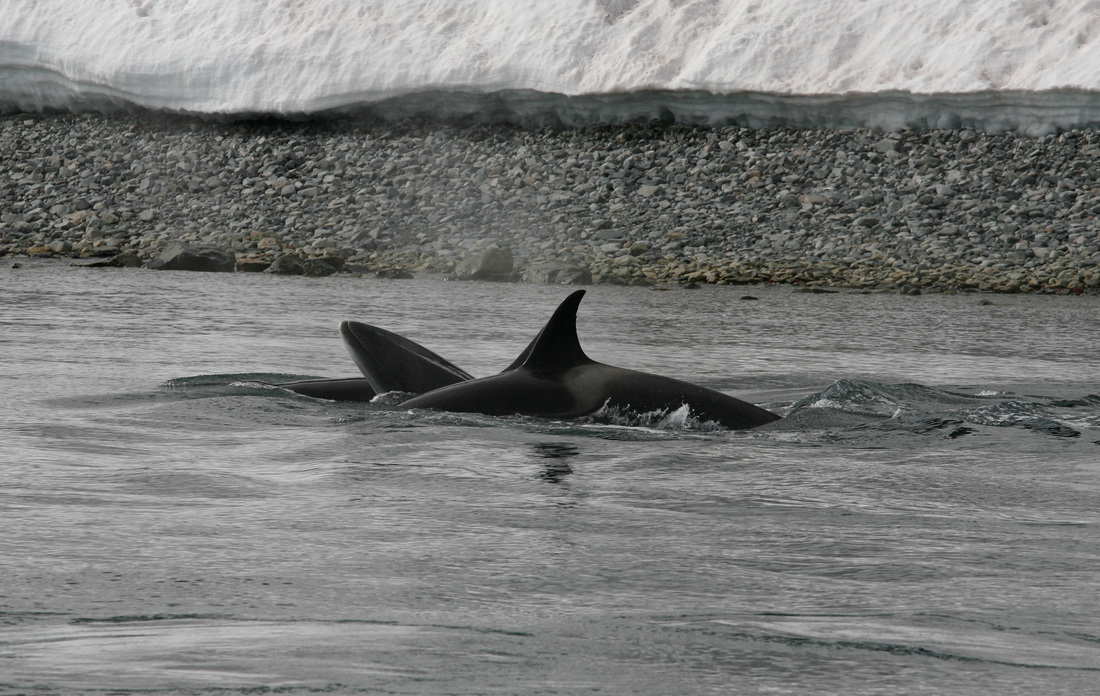
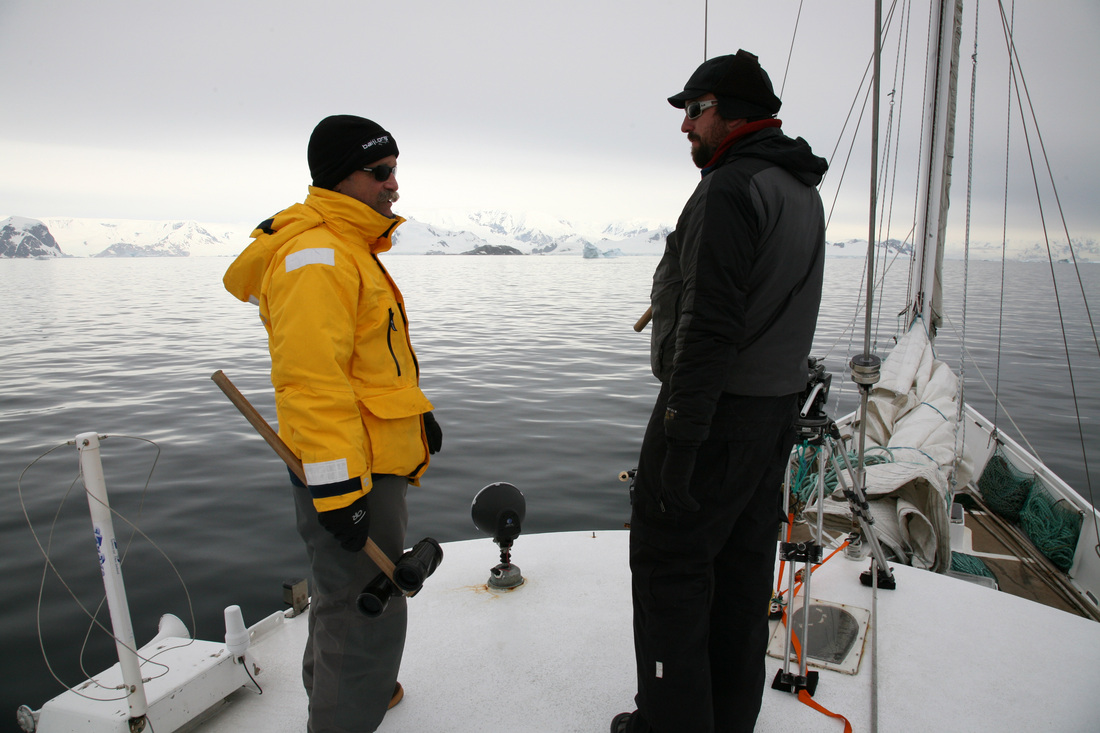
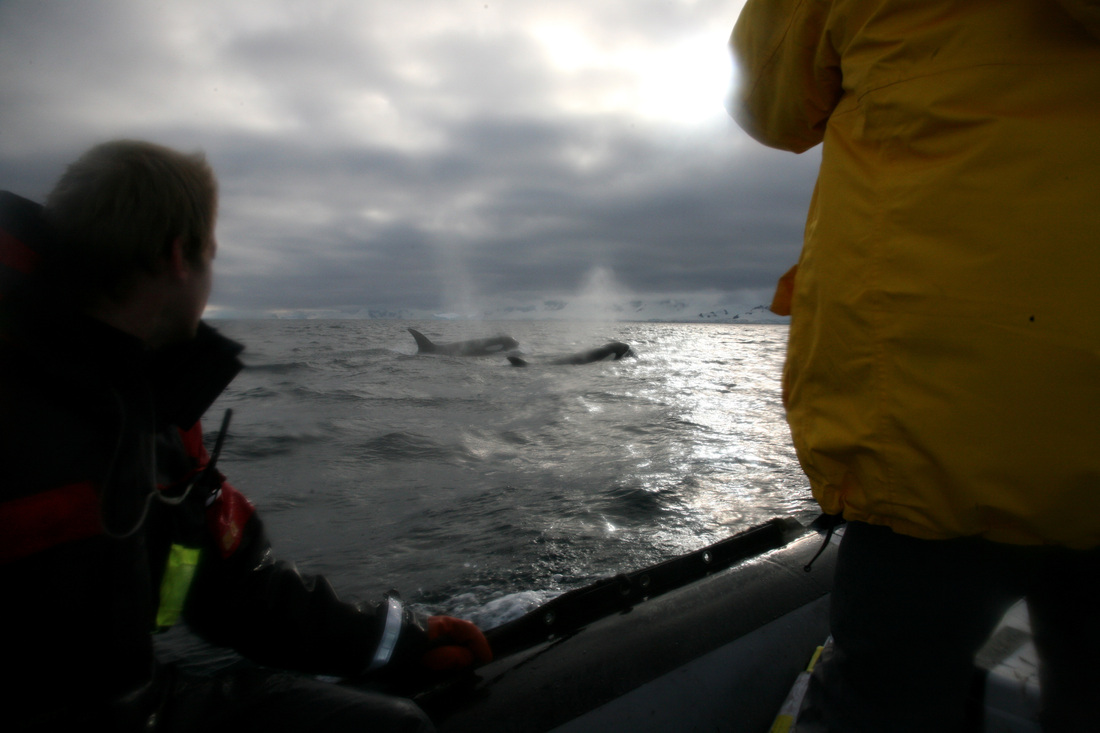
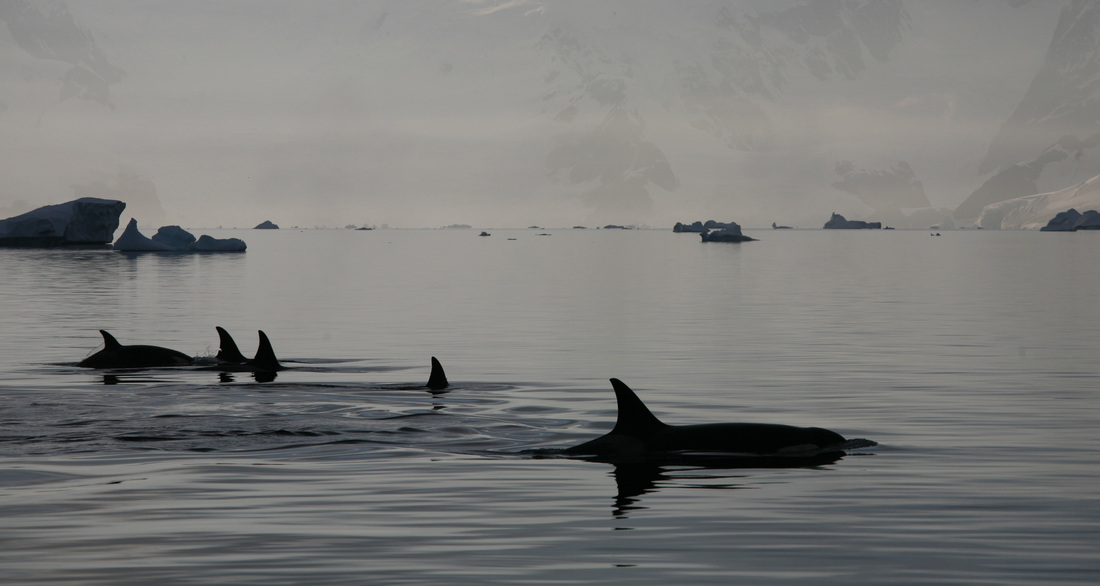
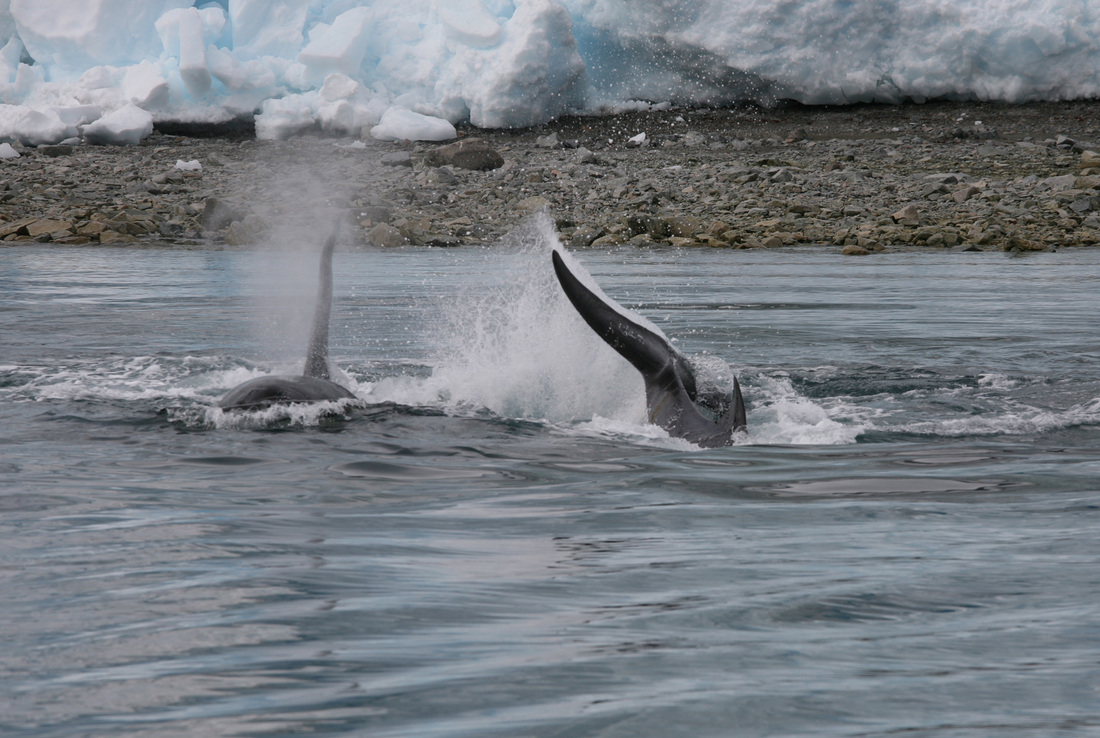
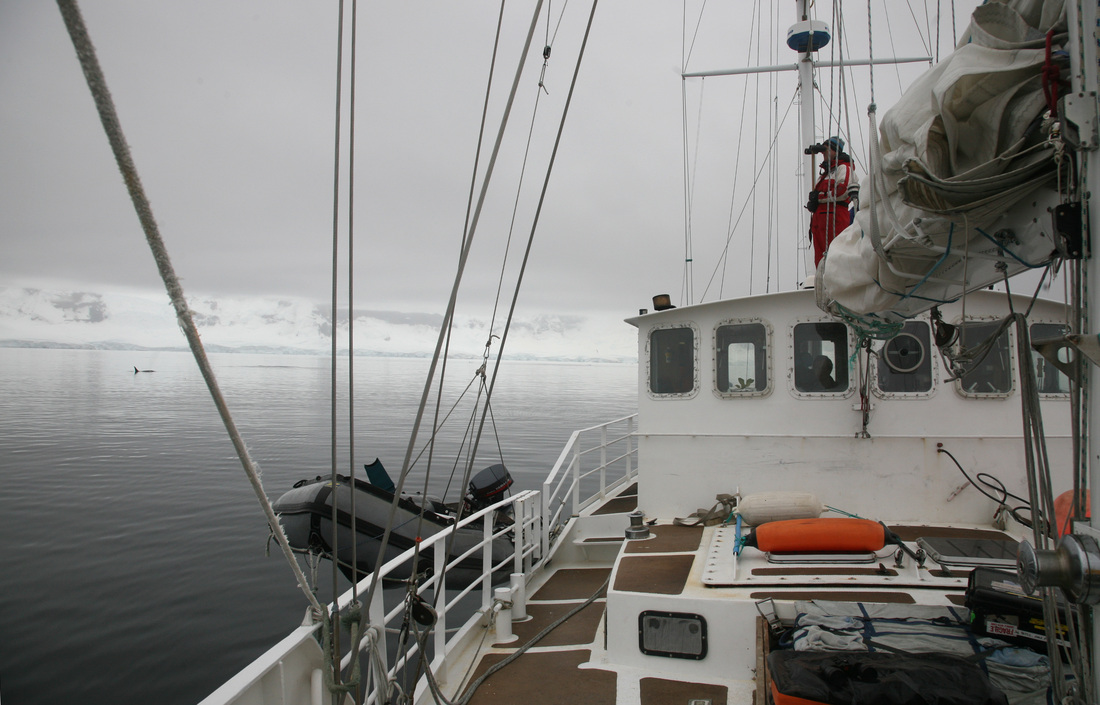
 RSS Feed
RSS Feed
